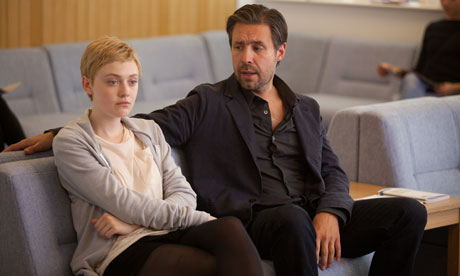
One of the stranger recent cultural shifts is that teenage fiction has become a branch of oncology. Cancer is rampant. You're barely a chapter in before a tumour erupts or a lymphatic system turns nasty. Young heroes and heroines are terminal from page one, or a friend is, or a parent. The shadow of premature death has fallen upon the genre: one half-expects Waterstones to be staffed by Macmillan nurses.
It is axiomatic (though wrong) that teenagers will read only books that reflect teenage experience. It is blithely asserted, for instance, that their hunger for dystopian fiction is whetted by having to live in a bleak world under the pitiless authority of adults. Is cancer, likewise, a metaphor for the incurable cruelty of being young? Perhaps, but I doubt it. I suspect that the real reason for the pandemic is that cancer is an exceedingly convenient subject for teen authors.
Sex and death, the magnetic poles of fiction, attract us children's writers no less than adult authors, but we have to be more leery of their pull. We have gatekeepers to sneak past – and we have a "sense of responsibility", of course. Cancer is handy because it is all-permissive. Sex is omnipresent in teenage cancer novels, and who dare complain? How cruel to insist on virginity in the face of death: it would be perverse of us not to write scenes of last-chance deflowering.
Teen authors love to flirt with taboo, to grapple – sensitively – with dark and frightening issues, and there is nothing darker and more frightening than cancer. Approximately 16 out of every 100,000 children contract a form of the disease in the US, of whom three will die of it. Each of these tragedies will spread a wider circle of pain, of course, but the fact is that child cancer is comparatively rare and affects relatively few young people. Teenagers see it, correctly, as a horror visited mostly on adults. It is not, therefore, a real and present danger in the way that bullying, sexual humiliation, peer-group rejection and parental severance are. So cancer is not a dangerous subject – it's a safe one. It allows teen authors to wax emotive without being threatening. It allows us to appear to be brave ("unflinching" is the usual term) taboo-busters while jerking tears for all we're worth.
The surprising thing is that so many teenage cancer novels are very good. John Green's The Fault in Our Stars, recently published by Penguin, was voted Time Magazine's book of the year in 2012 ahead of Hilary Mantel and Zadie Smith. (It also initiated a recent Daily Mail broadside against "sick lit", which earned that august organ an online drubbing.) Green is an uber-presence on the net with a vast and adoring following.
The Fault in Our Stars is about two young people dying of cancer. Hazel, the narrator, is permanently connected to an oxygen tank because her lungs are packing up. Augustus, with whom she falls in love at a support-group meeting, has already lost a leg to the osteosarcoma that will soon consume the rest of him. Green is indeed unflinching when it comes to the manifestations of their conditions, and this may be why the novel has been praised for its realism. This is wide of the mark and something of an injustice. The Fault in Our Stars is not realistic: it is a very smart artifice. Much as I would love to meet teenagers such as Hazel and Gus, I fear I never shall, for surely such erudite, witty, philosophical, generous, courageous and doomed young people never walked the earth, let alone Indianapolis. Hazel knows Eliot's The Love Song of J Alfred Prufrock by heart, and in an emergency can recite William Carlos Williams. Kierkegaard would have welcomed Gus as an apprentice.
The Fault in Our Stars is a masterclass in how to have your cake and eat it. It's a tear-jerker; if you check the teenage postings on any of Green's sites, your screen will drip. It skates nimbly on thin ice (terminally ill kids having sex after a visit to the Anne Frank House in Amsterdam would be too portentous or vulgar for most writers), while being knowingly ironic about what it's doing. And it's complicatedly self-referential: Hazel and Gus have travelled to Holland to meet Peter Van Houten, the author of their favourite novel in which, needless to say, the heroine dies of cancer. In the flesh, he's a boorish drunk who disabuses them of the notion that characters in a book have any existence beyond the last page.
The Fault in Our Stars is a very smart book. "Smart", in American usage, is slicker and sharper than "intelligent"; faster off the mark and quicker on its feet than deep thought. The problem with smartness is that it tends towards dubious aphorism, eg "Some infinities are bigger than other infinities" (one should regard the plural of infinity with the same suspicion as the collective noun for hermits). Nonetheless, The Fault in Our Stars is the second-best teenage cancer novel I've read (the best being Anthony McGowan's Falstaffian comedy Henry Tumour). And though I'd like to think that we're going into remission, I doubt it. When film-makers are through with dystopia, I imagine they'll pick up on cancer. Jenny Downham's Before I Die (retitled Now Is Good) is already on general release. Buy shares in Kleenex now.
• Mal Peet's latest novel is Life: An Exploded Diagram, published by Walker

